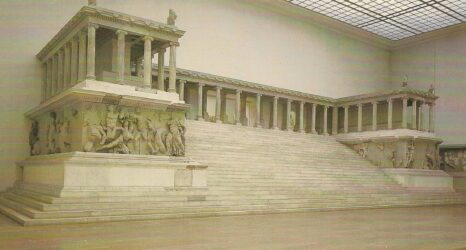US-Präsidentschaftswahlkampf 2024
Trump wichtiger als eigene Familie
Von Hansjürgen Mai
Der parteilose Robert F. Kennedy Jr. zieht seine Kandidatur zurück und unterstützt jetzt offiziell Donald Trump. Seine Familie sieht das als Verrat.
2 Likes
US-Präsidentschaftswahlkampf 2024
Von Hansjürgen Mai
Der parteilose Robert F. Kennedy Jr. zieht seine Kandidatur zurück und unterstützt jetzt offiziell Donald Trump. Seine Familie sieht das als Verrat.
John Mayall and The Bluesbreakers- Mists Of Time - Stories
Schon am 22. July ist der Vater des britischen Blues gestorben. Er wurde 90 Jahre alt. Noch vor 5 Jahren konnte ich ihn live erleben. Möge er nun in Frieden ruhen.
LYRICS:
Somewhere in the world
Are friends I've missed from long ago
Could be drifting by the wayside
Or even dead - I just don´t know
And now my memories are fading
...Like melting footprints in the snow
Sometimes a dream will haunt me
And I see a young girl's face
Was she once for real
And did she really share my space
Within the swirling mists of time
It's hard to keep a track of year and place
I thought about my mother
When she was young and on the road
Hanging out with my musicians
Or camping out in forest groves
Like gray mists conceal horizons
I miss those times we'll share no more
So far my life's a journey
And I wouldn't change for anything
All those years of bold adventures
The highs and lows that make me sing
Within the swirling mists of time
Such sweet memories sitll often ring.
---- deutsch oben, englisch darunter. ;)
---- german at top, english below. ;)
Spass mit dem älter werden. Episode xy, besuch beim Optiker.
Hart auf die 50 zugehend ist es dann endlich so weit, das ich schlussendlich wohl auch mal eine brille brauche. Hey ich bin echt gut durchgekommen, aus meiner familie haben ausnahmsweise _ALLE_ irgendwie eine brille gebraucht. Ich bisher nicht...... Bisher.
Die nette dame beim Optiker eröffnete mir erstmal erschreckende zahlen. 25% Sicht im linken und 32% im rechten auge im nahfeld/lesebereich.
Yeah das kann gut sein... Der chat im handy game is halt schon seit langem nicht mehr ohne lupe lesbar... örgs. ;)
Weitsicht is auch nicht mehr so dolle meinte sie. Yip. Früher konnte ich die zugzielanzeiger an bahnsteigen bequem über die halbe länge des bahnsteigs hinweg lesen..... Heute muss ich dann schon auch auf 5 meter herangehen.... mhhh.. ;)
Das ist blöd, falls ich dann doch noch mal irgendwie einen führerschein machen wollen würde.... Würde ich definitiv die brille eingetragen kriegen... *grml* was solls.
So richtig piekt mich die ganze sache aber an einer gänzlich anderen stelle.
Auf die frage danach, was für eine brillengestell-form ich mir denn vorstellen könnte, muss ich immer wieder an meine lieblings sonnenbrille denken die mir leider vor jahren abhanden kam.
Die war rund. O.k. vollverspiegelt usw, aber schlicht rund. John Lennon stil.
Damit können heute nurnoch die wenigsten etwas anfangen.
heute müsste ich harry potter referenzieren...
AAAAAAAAAAAAAAAAAAAAAAaaaaaaaaaaaaaaaaaaaaaaaaaaaaaaaaahhhhhhhhhhhhhhhhhhhhhhhhhhhhhhhhhhhhhhhhrg.
Hilfe, ich will das nich .. ich bin zu alt für den scheiss!!! ;)
---- english below
Having fun getting older. Episode xy, visit to the optician.
As I'm approaching 50, it's finally getting to the point where I'll probably need glasses. Hey, I got through it really well. For once, ALL of my family needed glasses in some way. I haven't yet......So far.
The nice lady at the optician initially told me the shocking numbers. 25% vision in the left and 32% in the right eye in the near field/reading range.
Yeah, that could be the thing... The chat in the mobile phone game hasn't been readable without a magnifying glass for a long time... oh well. ;)
Farsight isn't that great anymore, she said. Yip. I used to be able to easily read the train destination indicators on platforms over half the length of the platform..... Nowadays I have to go within 5 meters (a few feet).... mhhh.. ;)
Enervingly, if I somehow wanted to get a driver's license now.... I would definitely get the glasses registered... *grml* whatever.
But what really bothers me in a completely different thing.
When asked what kind of glasses frame shape I could imagine to like, I keep thinking about my favorite sunglasses, which I unfortunately lost years ago.
They were round. OK. fully mirrored etc, but simply round. John Lennon style.
Very few people can imagine (pun intended) anything with that reference today.
Today I would have to reference Harry Potter...
AAAAAAAAAAAAAAAAAAAAAaaaaaaaaaaaaaaaaaaaaaaaaaaaaaaaaahhhhhhhhhhhhhhhhhhhhhhhhhhhhhhhhhhhhhhhrg.
Help, I don't want this... I'm too old for this shit!!! ;)
#Brille #Brillen #Glasses #John #Lennon #Imagine #Harry #Potter #optician #getting old #altwerden #RandomShit2024
https://youtu.be/ugrAo8wEPiI
https://redirect.invidious.io/watch?v=ugrAo8wEPiI
https://www.bitchute.com/video/0DtoJ3mogmnr/
#ALISTAIRWILLIAMS RIPS UP #DR #JOHN #CAMPBELL
#vaccinescam is murdering millions
Alistair Williams rips up Dr John Campbell
Für frühe Feuerwehrleute war nicht garantiert, dass der Schlauch einen steten Strahl produzierte – bis der Windkessel aufkam. Aber erst nun ist klar, was das Gerät leisten konnte.#Windkessel #Wasser #Druck #Wasserdruck #Richard #Newsham #John #Lofting #England #Erfinder #Feuerwehr #Schlauch #Feuerwehrauto #Löschfahrzeug #Rohr #Neuzeit #18Jahrhundert #Physik #Druchschwankung
Wie steter Wasserdruck in den Feuerwehrschlauch kam
In #Ukraine, the #US is dragging us towards war with #Russia
This article is more than 9 years old
#John #Pilger
We in the west are now backing #neo-Nazis in a country where Ukrainian #Nazis backed Hitler.
The Guardian
Ich wünsche nun allen ein schönes Weihnachtsfest.
Auf mein Profil bei Hubzilla kann ich Heute aus irgendeinem mir unbekannten Grund nicht zugreifen. Ich weis nicht, was da los ist.
#john_lennon #christmasforloveandpeace #musik #Diadvent23 #adventskalender23
John Lennon ~ So this is Christmas.
#john lennon
^Chris Norman Christmas Song

✰Merry ✰Christmas✰
#christmasforloveandpeace #musik #john_lee_hooker #blues #Diadvent23 #adventskalender23
https://www.youtube.com/watch?v=g_kj60DIq2M
#HAPPY_XMAS ( #WAR IS #OVER). ( #Ultimate #Mix, #2020) #John & #Yoko ...
20 Nov 2020 ... Print out WAR IS OVER (IF YOU WANT IT) posters in over 100 languages
^John Lee Hooker - Blues for Christmas

#christmasforloveandpeace #musik #john_lee_hooker #blues #Diadvent23 #adventskalender23

#Altar of #Zeus ? at #Pergamon, #Turkey: the #Throne-of-Satan
And to the angel of the congregation that is in Pergamon write: “Thus says the one who has the sharp, two-edged sword:
‘I know where you dwell, where the throne of #Satan is, and you hold fast to my name and you did not deny my faith even in the days of Antipas, my witness, my faithful one, who was killed among you, where Satan dwells.’”
(Revelation 2:12–13)
On a symbolic level, the “throne of Satan” mentioned in this passage represents a power in opposition to #God, a power that is embodied in Roman imperial might. Throughout Revelation, a system of symbols associates Satan, depicted as a #dragon or #serpent, with the #Roman #Empire and emperor depicted as a #beast.
Unlike other early Christian writers, #John the #prophet did not encourage his audience to honor and obey the emperor, but instead encouraged—by means of his symbols and rhetoric—resistance.
In principle, during the first century C.E., Roman officials tolerated believers in #Jesus as the Messiah insofar as they could be regarded as Jews. Jews were expected to honor the emperor and to pray for his welfare, as well as for the welfare of the empire. As monotheists, however, they were normally not expected to worship the emperor, as most Greeks and Hellenized provincials did with enthusiasm. Nero’s police action against the Christians of Rome in 64 C.E., however, apparently set a precedent for executing Christians merely for being such, and by the time of Trajan (emperor from 98–117 C.E.). Christians who refused to curse Jesus Christ and to worship the emperor, along with the traditional gods, were liable to execution as stubborn adherents of “superstition.” #Nero’s action marks the beginning of the end of Roman acceptance of Christianity as a Jewish movement.
John’s imagery in #Revelation is more than symbolic, however. The very explicit association the author makes between the “throne of Satan” and the city of Pergamon suggests that something visible in the city inspired the phrase. Taken together, the #archaeological and textual #evidence points to the same candidate: the Great Altar of Pergamon, one of the most significant (and stunning) monuments to survive from the Greco-Roman world. To John of Revelation, it is the “throne of Satan.”
Pergamon (modern #Bergama, in Turkey) is located on the Caicus River in western #Asia-Minor in the region traditionally called Mysia. In John’s time, Mysia was part of the Roman province of Asia.
The oldest part of the city is the acropolis, which is considerably higher and steeper than the acropolis of Athens. The earliest record of settlement comes from Xenophon, a Greek who lived in the fourth century B.C.E. He writes about Pergamon’s role in the Spartan campaigns of 399 B.C.E.1 In the third century B.C.E. Pergamon was the center of the Hellenistic kingdom of the Attalids. When the last Attalid king died in 133 B.C.E., he willed his kingdom to Rome, and the Romans transformed the old Attalid kingdom into their province of Asia. Pergamon was one of the three most prominent cities of that province (along with Ephesus and Smyrna). Pergamon continued to be a leading city until the fourth century C.E.
The ruins of the ancient city visible today include a temple dedicated to the emperor Trajan and a theater on the top of the acropolis. The base of the Great Altar lies prominently on a terrace on the southern slope of the acropolis. A lower city circled the base of the acropolis. A road led from there to a compound dedicated to the god Asklepios. This compound served as a medical center, a spa and a center for rhetoric and the arts, as well as a shrine to the deity.
The Pergamon altar itself is now housed in the Pergamon Museum in Berlin. In the second half of the 19th century, stones from the ancient citadel on the acropolis of Pergamon were being burned in order to procure lime, so excavations sponsored by the Berlin Museum were carried out between 1878 and 1886. The Great Altar and many of its sculptures were removed with permission of the authorities in Turkey and taken to the museum in Berlin.
The purpose of Pergamon’s Great Altar is uncertain and continues to provoke debate. Was it a real altar on which meat from sacrificed animals would be burned or was it a victory monument with no sacrificial function?2
As for its date, however, a consensus has emerged that the Great Altar was constructed during the reign of the Attalid king Eumenes II, who was born in 221 B.C.E. and reigned from 197 to 159 B.C.E.3 It is likely that the altar was intended as a monument celebrating the victories of Eumenes II’s predecessors, as well as his own, including the Roman victory over the Seleucid king Antiochus III, with the assistance of Eumenes II, in 189 B.C.E. The altar was never completed,4 but it was unquestionably one of the city’s most important landmarks in antiquity.
https://library.biblicalarchaeology.org/article/satans-throne/
Klimagespräche zwischen USA und China
Der US-Klimabeauftragte John Kerry besucht Chinas Hauptstadt Peking. Es ist ein Neustart der Klimagespräche zwischen den beiden weltweit größten CO2-Verschmutzern.
#taz #tageszeitung #China #John #Kerry #vereinigte #staaten #von #amerika
Klaus Voormann über John Lennon, Harry Nilsson und Trio
Von Dominik Baur
Er war einer der besten Freunde der Beatles und zählte in den Siebzigern zu den gefragtesten Bassisten überhaupt. Jetzt wird Klaus Voormann 85.
#taz #tageszeitung #The #Beatles #Beatles #John #Lennon #Rock #n #Roll #wochentaz
SNL in 1982

https://www.youtube.com/watch?v=2KMyYAsamIU
4:28 min #music video (Elton #John - Ball and Chain)
#JohnnyCash #EltonJohn #SNL

https://www.bitchute.com/video/5UFIq5l60LRd/
#JOHNOLOONEY AND #MATTLETISSIER, #JACQUIDEEVOY, LAID BACK CHAT
#JOHN O’LOONEY AND #MATT_LE_TISSIER, JACQUI DEEVOY, LAID BACK #CHAT